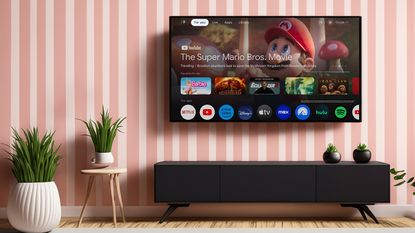Quick Summary
The Stable Volume feature from the mobile app is expanding to include Android TV and Google TV devices. It automatically adjusts video volume to help you handle poorly mixed audio and remove unwanted volume spikes.
What's the most annoying thing about YouTube videos, other than unskippable ads? For many of us it's having videos with wildly varying volumes. Some videos are mixed too quietly, so you turn up your TV only to be blasted by the next bunch of ads or by a better recorded video. And others are just mixed inconsistently, with more quiet bit/loud bit dynamics than a Pixies record. So it's good to see that YouTube is bringing its Stable Volume feature to Android and Google TVs.
Stable Volume is a feature that's already in the mobile app. It analyses the audio of the currently playing track and adjusts it so that it doesn't go too loud or too quiet. It's not the same as the quiet mode you'll find in some of the best soundbars; that changes the sound to help you hear dialogue more clearly at lower listening levels. Stable Volume is purely about flattening the volume to ensure there are fewer alarms and fewer surprises.
When is Stable Volume coming to your Google TV or Android TV?
The eagle-eyed Android watchers at 9to5Google have spotted a toggle for Stable Volume on multiple televisions, all of them running the latest version of YouTube (v4.40.303).
Provided your Google TV or Android TV has been updated to that version you should see the new toggle in the Settings menu, which you access using the gear icon when a video is playing. When you do that you should see the familiar Quality, Captions, Speed and other options, with Stable Volume a new arrival towards the top.
You don't even need to look for it: if you've got the right software the new feature appears to be enabled by default.
While Stable Volume is useful, there are some circumstances in which you'll want to turn it off. I mentioned Pixies records earlier; volume levelling is something you'll want to turn off if you're serious about your music, because many records depend on loud/quiet dynamics and flattening them takes away some of the fun. However, it's a real boon on a lot of spoken content, particularly podcasts where volume levels can differ significantly from person to person.



